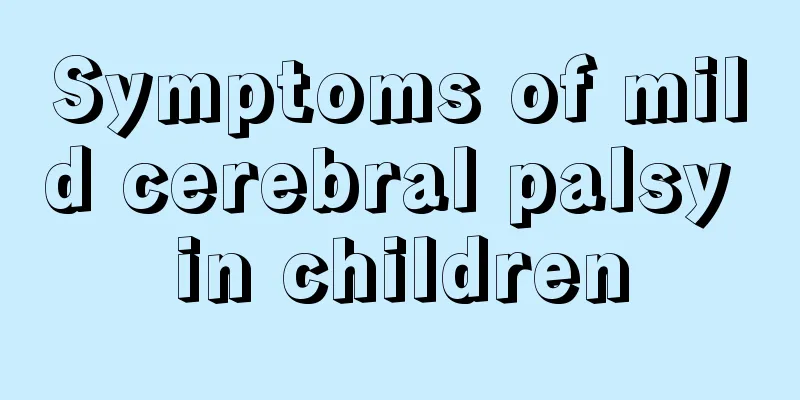Is swollen lymph nodes serious in children?

|
Lymph node enlargement is very common and can occur in people of any age. It can be seen in a variety of diseases and can be both benign and malignant. If it is benign, drug treatment is generally chosen. If it is malignant, special attention needs to be paid. Therefore, we should pay attention to the causes of swollen lymph nodes and seek medical treatment in time. It is best to go to a large hospital for diagnosis to avoid misdiagnosis or missed diagnosis. So what causes swollen lymph nodes in children? Causes of swollen lymph nodes in the neck There are many causes of swollen lymph nodes in the neck, the most common ones are inflammatory swelling, tumor swelling, reactive hyperplasia and histiocytic hyperplasia. 1 Inflammatory swelling When acute or chronic lymph node infections are caused by bacteria, viruses, rickettsia, chlamydia, fungi, spirochetes, protozoa, worms, etc., the lymph nodes may become congested, edematous, and lymphocytes and macrophages may proliferate, with infiltration of neutrophils, monocytes, and plasma cells, and even necrosis and granuloma formation, causing lymph node enlargement and pain. Acute lymphadenitis is usually secondary to infection of the corresponding drainage area, and effective antibiotic treatment can shrink the enlarged inflamed lymph nodes. However, we should also pay attention to the occurrence of lymph node tuberculosis clinically, especially for patients whose antibiotics are ineffective and whose blood routine tests are basically normal, the possibility of lymph node tuberculosis should be considered. The clinical characteristics of cervical tuberculosis are: enlarged lymph nodes on the side of the neck, nodular, painless, more common in children and young people; initially isolated nodules, relatively smooth and movable, later the nodules merge into masses, irregular, poor mobility, the masses can form abscesses, with a sense of fluctuation, after rupture can form sinus tracts, sneak under the skin, long-term non-healing; the secretion is thin, often containing cheesy substances, the wound granulation tissue is unhealthy; there may be low fever, night sweats, fatigue, weight loss and other systemic symptoms; some patients may have a history or lesions of tuberculosis in the lungs; pathological biopsy can confirm the diagnosis. The clinical characteristics of chronic lymphadenitis are: most of them have obvious infection foci, and the lymph nodes are often localized, with pain and tenderness, usually not exceeding 2 to 3 cm in diameter, and will shrink after anti-inflammatory treatment. Flat lymph nodes that persist in the neck for a long time without changing are usually of no importance. 2 Tumorous enlargement Whether it is an endogenous tumor originating from the lymphatic tissue or a tumor metastasized from outside the lymph nodes (such as oral cancer metastasized to the cervical lymph nodes, nasopharyngeal cancer metastasized to the cervical lymph nodes, gastric cancer metastasized to the left supraclavicular lymph nodes, etc.), it can manifest as unrestricted proliferation of tumor cells in the lymph nodes, occupying and destroying the normal tissue structure of the lymph nodes, while also causing fibrous tissue hyperplasia and inflammatory cell infiltration in the lymph nodes, leading to lymph node enlargement. Oral cancer usually presents lesions in the oral cavity, such as rapidly growing ulcers, hard, invasive masses, etc. The early symptoms of nasopharyngeal carcinoma include: blood in nasal discharge, nasal congestion, tinnitus, headache, swollen lymph nodes in the neck, etc. The clinical characteristics of cancerous lymph nodes are: they are often hard as stones and relatively fixed, grow rapidly, have lymph node fusion, and have symptoms such as pain in the late stage. Antibiotic treatment has no obvious effect. 3 Reactive hyperplasia It includes two types: nonspecific reactive lymphocytic hyperplasia and immune reactive hyperplasia, which are mostly caused by biological factors, chemical factors, allergic stimulation and other factors. The reactive proliferation of lymphocytes, monocytes and macrophages in the lymph nodes is manifested as enlargement of lymph follicles. The hyperplasia of parafollicular lymphocytes can sometimes manifest as necrotic hyperplasia, thus leading to lymph node enlargement. Patients often have a history of liking to keep or contact pets, or contact with other external irritating objects. 4 Histiocytic hyperplasia There are a large number of histiocytes proliferating in the lymph nodes in a focal or diffuse distribution. Granulomas may also be formed, such as Langerhan histiocytosis. In addition, when a large number of Niemann-Pickz cells and Gautier cells gather in the lymph nodes, it may also cause lymph node enlargement, such as Niemann-Pickz disease and Gautier disease. Such diseases are relatively rare clinically. |
<<: Six-year-old child has blood in stool but no pain
>>: What to do if your child has swollen lymph nodes in his abdomen
Recommend
How to improve children's memory?
It is the common wish of every child to grow up h...
Why do most people who get leukemia are children? Parents must watch
Who caused the child to have leukemia? Don't ...
7 safety tips you must tell your children
1. Be wary of cars Cars have become the number on...
What to do if your child's wrist is dislocated
Many mothers are very worried that their children...
What are the ways to lose weight through exercise for children?
Many children are prone to obesity due to various...
How to train a child with ADHD
If a child has ADHD, parents must accompany the c...
How to identify impetigo
As we all know, impetigo is a common contagious s...
What can’t babies eat when they have measles? Don't eat randomly anymore.
Parents, please take note: if your baby has measl...
How to control runny nose in babies due to fever, cold and sore throat? What are the adjustment options?
Because of their special physical constitution, b...
What to do if your child keeps crying
Many parents are very troubled that their babies ...
Does anyone know how to treat cerebral palsy in premature babies?
How to treat premature infant cerebral palsy is a...
What is the most effective way to treat dry cough without phlegm in children?
Diseases are very common in people's daily wo...
What is the scientific method to correct children’s stuttering?
When a child stutters when speaking, parents usua...
Can babies eat sheep brains? Parents, please watch this.
As we all know, sheep brain is a food with very h...
What should I do if my ten-day-old baby has diarrhea?
If a newborn baby has diarrhea, parents should be...









